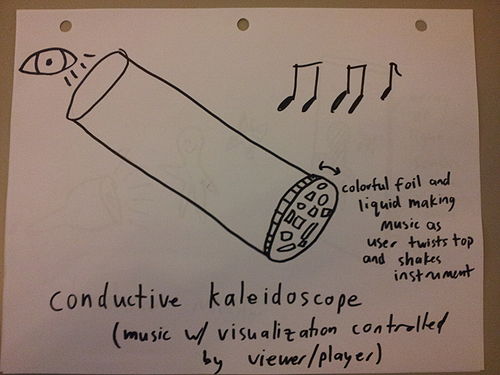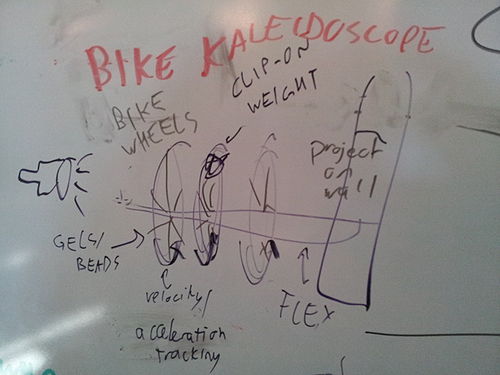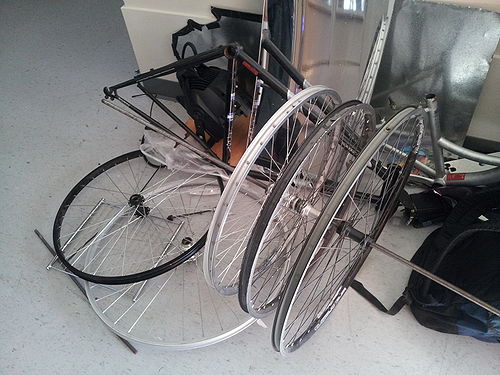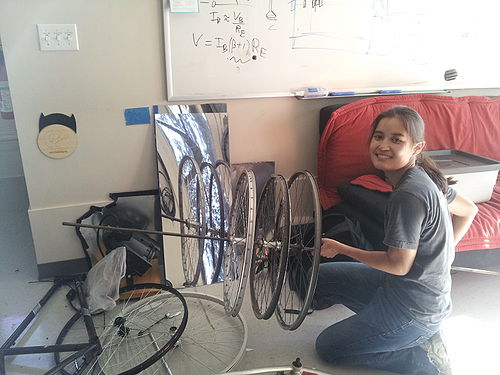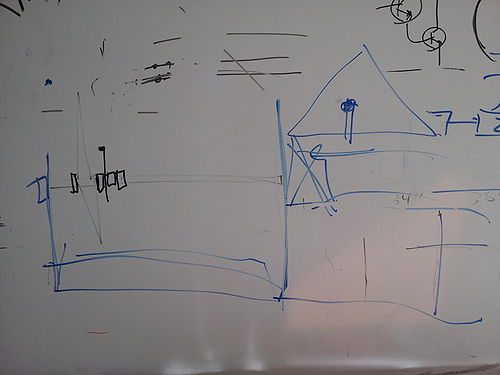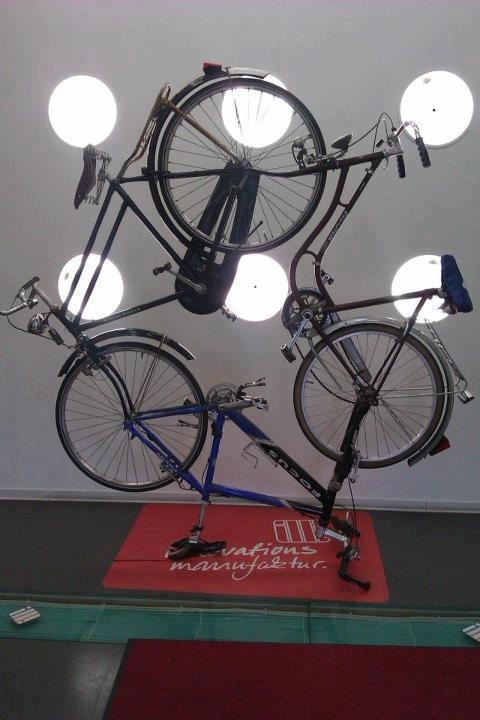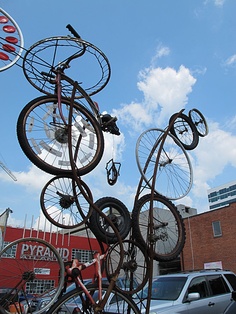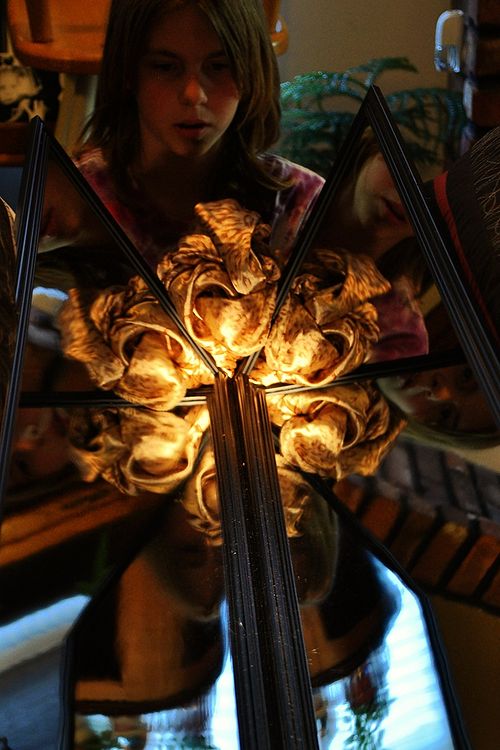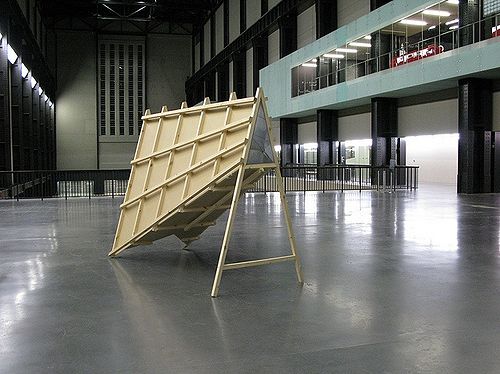Difference between revisions of "Bicycaleidoscope"
(→Similar Work) |
(→Similar Work) |
||
| Line 73: | Line 73: | ||
Takeaway: People seem to enjoy playing with the altered visual state that kaleidoscopes create | Takeaway: People seem to enjoy playing with the altered visual state that kaleidoscopes create | ||
| − | [[File:Tate-giant-kaleidoscope.jpg|500px]] [[File:Tate-giant-kaleidoscope-inside.jpg| | + | [[File:Tate-giant-kaleidoscope.jpg|500px]] [[File:Tate-giant-kaleidoscope-inside.jpg|300px]] |
Revision as of 22:30, 3 November 2013
Contents
Bicycaleidoscope: A Giant Musical Kaleidoscope
Drawings
Early sketch of a musical kaleidoscope:
This sketch came from the brainstorming assignment for class -- the initial idea is a small, handheld kaleidoscope where the music syncs up with the visualization.
Design sketch of a larger, more public musical kaleidoscope experience:
Design discussions with Sasha led to the idea of using bike wheels and a spotlight to project a kaleidoscope onto a wall, with Hall sensors to track the velocity and acceleration. This sketch shows a series of bike wheels mounted on a rod. The idea is that the musician would spin the bike wheels by hand to control both the musical output and the visual results.
Starting to build the instrument:
We procured bike wheels from the bike store and a metal rod from the garage and started to set up the instrument. We experimented with using the bike frames (in the background) as part of the mounting system. The mirrors (also in the background) will form the tunnel of the kaleidoscope. Our experimentation with the wheels and the mirrors proved that the mirror tunnel is key to the visual effect of the kaleidoscope -- otherwise, only having spinning gels and beads feels a little lame.
Sketch for mounting the sensors
Now that the bike wheels are mounted, we started to think about how to incorporate sensors into the instrument. This idea is to mount the Hall effect sensors on the rod itself (stationary), to track the bike wheel movement. Then, the mirror will cover only the bottom half of the bike wheel, so that the sensor does not interfere with the visual effect.
Similar Work
Three bikes mounted together as a tree
Takeaway: The bike frame/part aesthetic is appealing.
A giant digital kaleidoscope which is activated by the participation of the viewer
Takeaway: Viewers enjoy interacting with the kaleidoscope, so we should make sure that viewers can be expressive and creative in their interactions. Also, giant kaleidoscopes are awesome!
Recycled bicycle sculpture
Takeaway: Another incorporation/celebration of the junkyard aesthetic
DIY homemade giant kaleidoscope
Takeaway: Light and colors make the kaleidoscope more visually engaging
Giant kaleidoscope made for an event a Tate Modern in 2008
Takeaway: People seem to enjoy playing with the altered visual state that kaleidoscopes create
Sunrise Bike Wheel Kaleidoscope
Bicycle wheel with an axle extending out of the side that can be used as a handle while the bike wheel spins. This video shows footage from a camera mounted at the center of the wheel, mirrored four times.
Need/Want/Have
Elevator Pitch
We are building a giant musical kaleidoscope with bike wheels. The musician spins bike wheels with colorful gels to create awesome visual effects while sensors translate the wheel movement into music. A large kaleidoscope triangle of mirrors reflect the visuals while Hall effect sensors pick up the wheel acceleration and velocity and translate the activity into music.
